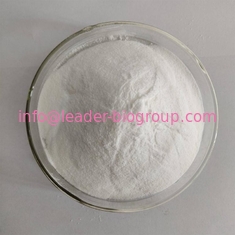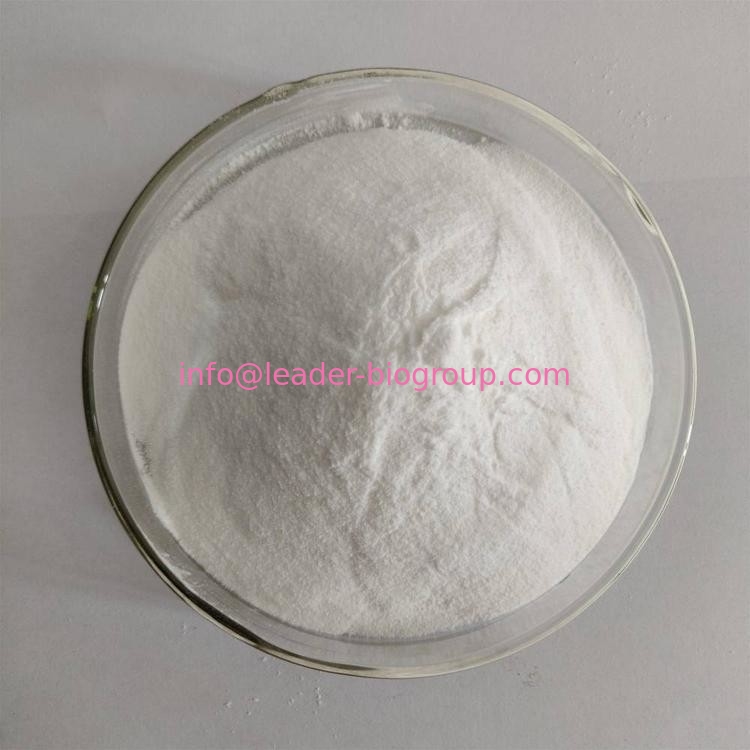| 2,4-Dichlorobenzoic acid Basic information |
| Product Name: |
2,4-Dichlorobenzoic acid |
| Synonyms: |
2,4-Dichlolrobenzoic Acid;TETRASUL PESTANAL (2,4,4',5-TETRA- CHLOR;2,4-Dichlorobenzoicacid,98%;2,4-Dichlorobenzoic;Furosemide EP Impurity E;Furosemide Impurity 5(Furosemide EP Impurity E);2,4-Dichlorobenzyl alcohol EP Impurity E;2,4-Dichlorobenzoic acid, 98% 100GR |
| CAS: |
50-84-0 |
| MF: |
C7H4Cl2O2 |
| MW: |
191.01 |
| EINECS: |
200-067-8 |
| Product Categories: |
C7;Carbonyl Compounds;Carboxylic Acids;Alpha sort;D;DAlphabetic;Aromatic Carboxylic Acids, Amides, Anilides, Anhydrides & Salts;Organic acids;DIA - DIC;Pesticides&Metabolites;Building Blocks;Carbonyl Compounds;Carboxylic Acids;Chemical Synthesis;acid;Organic Building Blocks |
| Mol File: |
50-84-0.mol |
 |
| |
| 2,4-Dichlorobenzoic acid Chemical Properties |
| Melting point |
157-160 °C (lit.) |
| Boiling point |
200 °C |
| density |
1.4410 (rough estimate) |
| refractive index |
1.4590 (estimate) |
| storage temp. |
Sealed in dry,Room Temperature |
| solubility |
ethanol: soluble1g/10 mL, clear, colorless |
| form |
Powder |
| color |
White to almost white |
| PH |
2.8 (0.36g/l, H2O, 15℃) |
| Water Solubility |
0.36 g/L (15 ºC) |
| BRN |
1868192 |
| Stability: |
Stable. Incompatible with strong oxidizing agents. |
| CAS DataBase Reference |
50-84-0(CAS DataBase Reference) |
| NIST Chemistry Reference |
2,4-Dichlorobenzoic acid(50-84-0) |
| EPA Substance Registry System |
Benzoic acid, 2,4-dichloro- (50-84-0) |
| Hazard Codes |
Xn,Xi |
| Risk Statements |
22-36/37/38 |
| Safety Statements |
26-36-37/39-22 |
| WGK Germany |
3 |
| RTECS |
DG6650000 |
| Hazard Note |
Irritant |
| TSCA |
Yes |
| HS Code |
29163900 |
| |
| 2,4-Dichlorobenzoic acid Usage And Synthesis |
| Chemical Properties |
white powder |
| Uses |
2,4-Dichlorobenzoic Acid is a di-halogenated benzoic acid derivative and an intermediate in the synthesis of spirodiclofen (S682990), a tetronic acid acaricide fungicide used in controlling red mites. |
| Uses |
2,4-Dichlorobenzoic acid is used as reagent during the synthesis of pyrimido[2?,1?:2,3]thiazolo[4,5-b]quinoxaline derivatives. It is also used as starting reagent during the synthesis of 1-(substituted)-1,4-dihydro-6-nitro-4-oxo-7-(sub-secondary amino)-quinoline-3-carboxylic acids. |
| Definition |
ChEBI: A chlorobenzoic acid that is benzoic acid in which the ring hydrogens at positions 2 and 4 are substituted by chloro groups. |
| General Description |
White to slightly yellowish powder. |
| Air & Water Reactions |
Insoluble in water. |
| Reactivity Profile |
2,4-Dichlorobenzoic acid is a halogenated carboxylic acid. Carboxylic acids donate hydrogen ions if a base is present to accept them. They react in this way with all bases, both organic (for example, the amines) and inorganic. Their reactions with bases, called "neutralizations", are accompanied by the evolution of substantial amounts of heat. Neutralization between an acid and a base produces water plus a salt. Carboxylic acids with six or fewer carbon atoms are freely or moderately soluble in water; those with more than six carbons are slightly soluble in water. Soluble carboxylic acid dissociate to an extent in water to yield hydrogen ions. The pH of solutions of carboxylic acids is therefore less than 7.0. Many insoluble carboxylic acids react rapidly with aqueous solutions containing a chemical base and dissolve as the neutralization generates a soluble salt. Carboxylic acids in aqueous solution and liquid or molten carboxylic acids can react with active metals to form gaseous hydrogen and a metal salt. Such reactions occur in principle for solid carboxylic acids as well, but are slow if the solid acid remains dry. Even "insoluble" carboxylic acids may absorb enough water from the air and dissolve sufficiently in 2,4-Dichlorobenzoic acid to corrode or dissolve iron, steel, and aluminum parts and containers. Carboxylic acids, like other acids, react with cyanide salts to generate gaseous hydrogen cyanide. The reaction is slower for dry, solid carboxylic acids. Insoluble carboxylic acids react with solutions of cyanides to cause the release of gaseous hydrogen cyanide. Flammable and/or toxic gases and heat are generated by the reaction of carboxylic acids with diazo compounds, dithiocarbamates, isocyanates, mercaptans, nitrides, and sulfides. Carboxylic acids, especially in aqueous solution, also react with sulfites, nitrites, thiosulfates (to give H2S and SO3), dithionites (SO2), to generate flammable and/or toxic gases and heat. Their reaction with carbonates and bicarbonates generates a harmless gas (carbon dioxide) but still heat. Like other organic compounds, carboxylic acids can be oxidized by strong oxidizing agents and reduced by strong reducing agents. These reactions generate heat. A wide variety of products is possible. Like other acids, carboxylic acids may initiate polymerization reactions; like other acids, they often catalyze (increase the rate of) chemical reactions. |
| Fire Hazard |
Flash point data for 2,4-Dichlorobenzoic acid are not available; however, 2,4-Dichlorobenzoic acid is probably combustible. |
|
|

